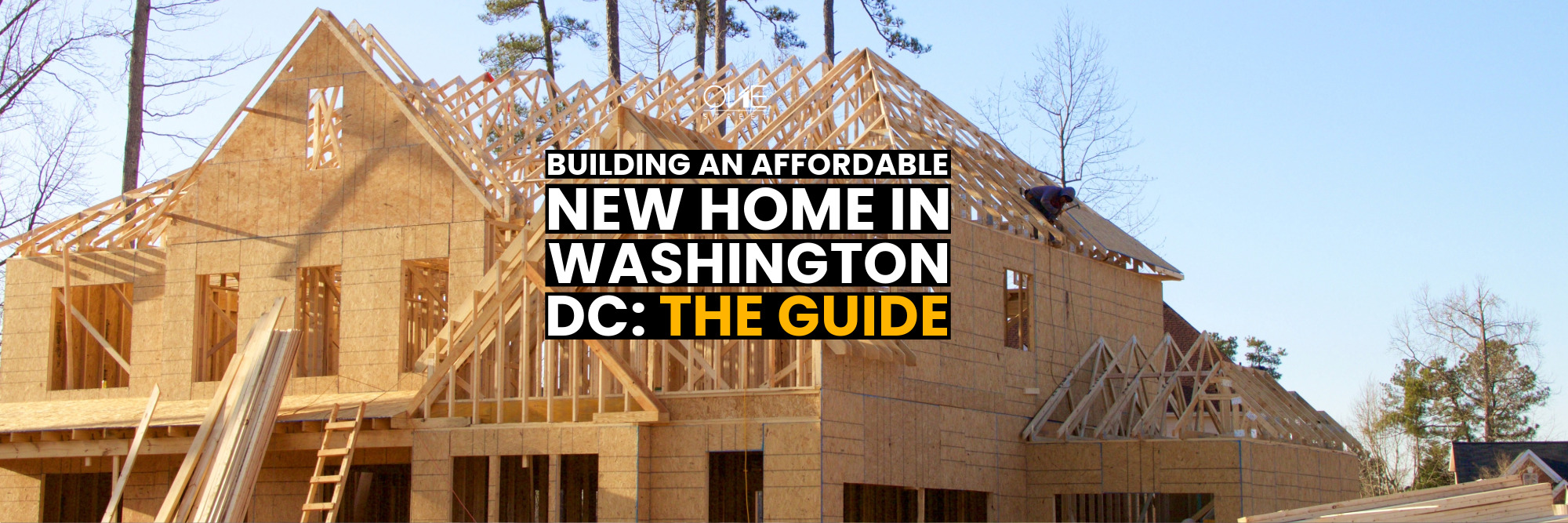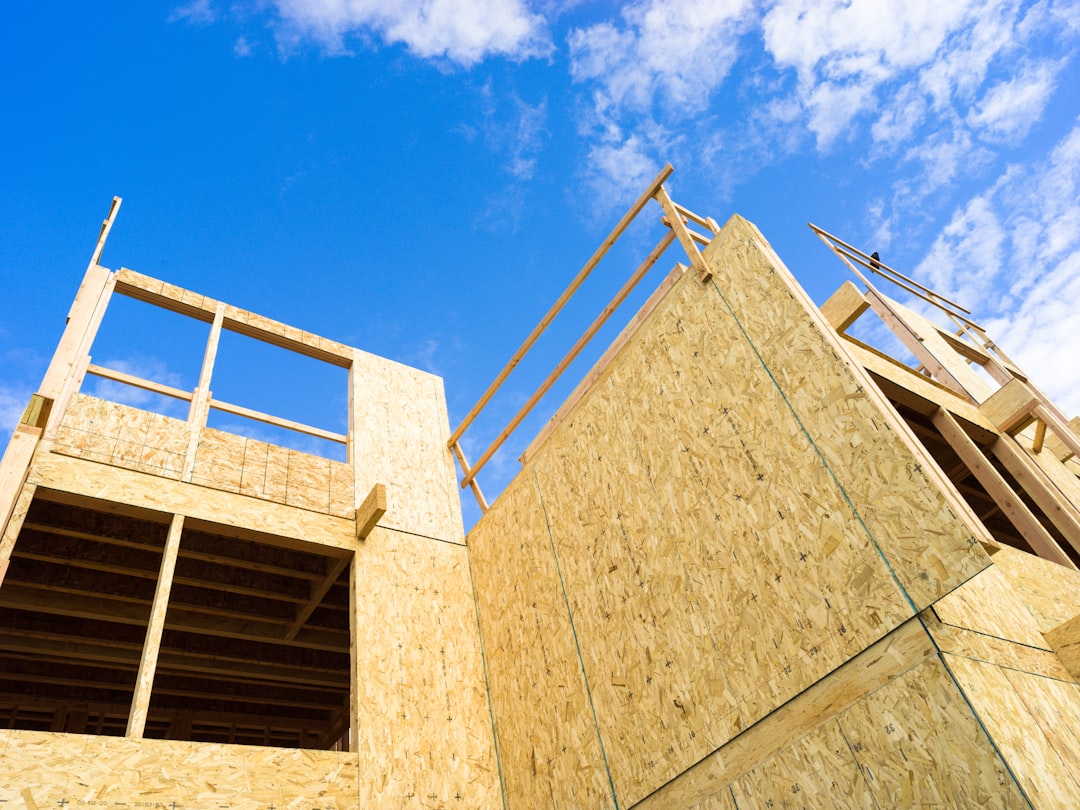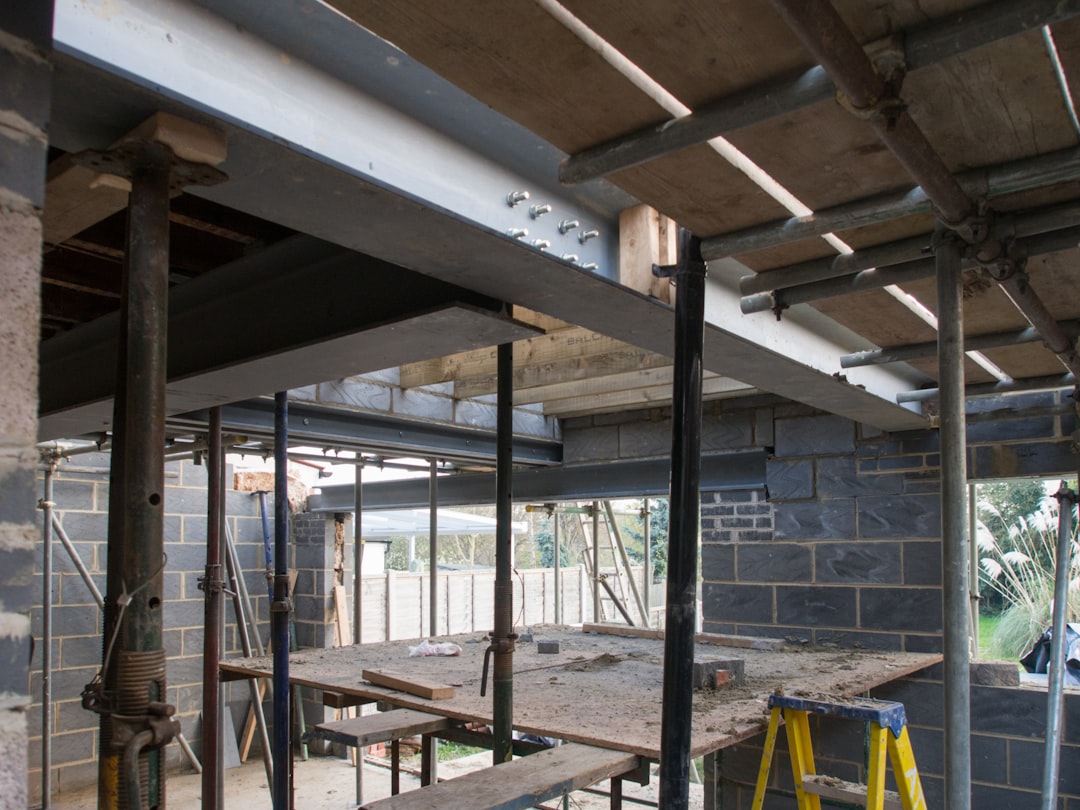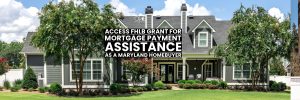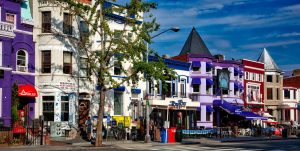The Affordable Way to Create a Custon Build a House in Washington, DC
The cheapest way to build a house depends on the quality you’re after, the size of the house, the location, and the cost of living. For instance, the cost to build a home in Brookland or Foggy Bottom will be lower than in Dupont Circle or Georgetown. Check out list of best new neighborhoods in Washington, DC to narrow down your choices.
Your skill level and experience will also influence the cost. The more work you can do yourself, like painting or simple carpentry, the more money you can save on labor costs.
In the following sections, we will discuss the cheapest way to build a home, the materials, and tips to build a house on a budget. But first, let’s compare building a house with buying one.
Is it Cheaper to Build a Home Or Buy One?
First, before you go the way of building your own home, remember that you need the land and skills to do so. You should do your research on if this is a reality for you. This research should begin with understanding what it takes to purchase a home in Washington DC. Take a look at our home buyer advice guide for Washington DC & first-time home buyer programs in the DC area. Now, you may not be a first-time buyer, but these are always good reference points before you start down the DIY method and can help detail the cost difference & savings.
In general terms, it is cheaper to buy an existing house than build a new home. As of Q4 2023, the average cost to purchase a house is $417,700. On the other hand, the national average cost to build a house is $329,000, excluding land. It costs, on average, $150 per square foot. That amount can add up to $480,000 if you include excavation costs, permits, and other expenses.
In the District of Columbia, the average cost to build a new home stands at approximately $613,969, with additional expenses such as land acquisition, excavation, permits, and miscellaneous fees potentially increasing the total outlay to $763,969. In contrast, the median sale price for homes in the District of Columbia is currently hovering at around $600,000 as of March 2024, making the purchase of an existing home not only a more budget-friendly option but also a quicker process, typically taking between 1.5 to 2 months.
Supply Chain Factors
Home building costs have continued to rise. The cost of building materials and the COVID-19 pandemic are two factors that have contributed to this. Inflation in the cost of building materials automatically increases construction costs. For example, if steel prices inflate, the cost of constructing a steel-themed structure also rises. The same goes for other building materials like glass, asphalt, lumber, ceramic, etc.
And while the pandemic is behind us, building costs are still expected to rise in 2024. This is because the demand for construction keeps going higher yearly. As demand grows, construction costs are predicted to increase further as suppliers struggle to keep up with the market.
In addition, the overall timeline for buying an existing house is typically faster. Upon inspection, appraisal, and negotiation, purchasing an existing home can be completed in weeks. However, a new build can take over six months if you are on the builder’s waiting list.
Opting to build your new home also has its incentives. You can select the floor plan and other features, such as the kitchen countertop, flooring, and paint colors. This gives you a feeling of control and customization that buying a house might not offer.
4 Cheapest Types of Houses to Build
So, you came here not to be talked out of your dream of building a home. Well, let’s look into the different types of build options you have that have the tiniest price tags attached to it. Don’t forget – all of these will range much higher in Washington, DC and our surrounding area. However, the less expensive way to build your own home begins with knowing what types of houses are the most affordable to construct. They include the following:
1. Tiny Homes: $30,000 – $90,000
In recent years, tiny homes have gained popularity as an affordable house style. They are less than 400 square feet and can be built on wheels or a foundation.
However, specific regulations can vary between states. Zoning laws in some cities and towns restrict the size of homes or require minimum square footage.
In the Washington D.C. area, for example, in all R-1 residential zones, the main house adjacent to the tiny house must be 1,200 sq ft in most zones and 2,000 sq ft, at the very least. Tiny homes must also be adjacent to either a 24-foot-wide alley or a 15-foot-wide alley and, at most, 300 feet from a main road for fire safety.
Since they require little space and a simple design, the cost of materials and construction is lower. You can estimate an average of $150 per square foot.
2. Prefabricated Homes: $90-$120 per sq ft
Prefabricated homes are constructed off-site in a controlled factory environment. They are then delivered and assembled on your premises.
What makes prefabricated or modular homes affordable is that they build the panels off-site and restrict build options. While you can upgrade and customize the home layout, they are not cheap. Prefab homes are more affordable than on-site builds but are not as inexpensive as some might assume. So, choose a less expensive style if you want to save money.
3. Shipping Container Homes: $10,000 – $32,000
Shipping container homes are another inexpensive house style for those looking to reduce construction costs. They are constructed around the structure of a shipping container, which provides a ready-made frame for building a house.
A new 20-foot dry container costs around $1,500, whereas a new 40-foot dry container usually costs between $2,500 and $4,500. A new 40-foot high-cube container can cost around $2,500 to $6,000.
Only a few states allow container homes, including Alaska, California, Tennessee, Missouri, Texas, and Washington, D.C.
4. Post-Frame Homes: $120 per sq ft
A post-frame construction is an economical way to build a home, often used for barns and sheds. This construction method involves vertical posts that support the roof and walls, allowing for large open spaces without interior support walls. Post-frame homes are cheaper to build than traditional stick-built homes.
It also uses larger posts and interlocking frames. Unlike stick-built (or stud wall) construction, this system can handle greater loads, saving time, labor, and material costs.
Due to their 8′ spacing, post-frame buildings also feature a larger wall cavity and ample insulation space. As a result, they are more energy efficient, as they cost less to heat and cool.
One thing to keep in mind is that not all post-frame builders offer drywall, electrical, heating and cooling systems, and other finishing services. So, confirm that these services are included in the home builder’s package before deciding.
Cheapest Materials to Build a House
The size and style of your house will determine how many materials you need to buy. Consider cheap building materials like the following to save you money.
-
Prefabricated panels: Prefab panels are designed in factories before shipment to a building site. Since they are ready for use, this reduces labor costs on-site when building a new home.
-
Shipping containers: You can purchase these intact, which makes construction cost-effective. In addition, shipping containers are fire-resistant, resistant to wear and tear, and windproof.
-
Reclaimed materials: Reclaimed floors, doors, and window frames enhance your home’s curb appeal and save material costs. You can find them at local salvage yards, online marketplaces, or demolition sites.
-
Stone cladding: Cladding is a cost-effective way to achieve the look of natural stone without the hefty price tag. It is lighter than a standard stone exterior and has the same durability and aesthetic appeal.
-
Bamboo: If you live in a tropical or subtropical environment, bamboo is a great building material to explore. Apart from being affordable, it has other benefits like sustainability and flexibility.
-
Eco-friendly straw: Straw is a cost-effective building material with excellent insulation properties. Straw bales can insulate your home’s walls and roof, providing natural temperature regulation.
-
Brick: You can buy new bricks, recycle them from an old construction, or even make them at home. You may also find salvaged brick via online marketplaces and construction or demolition sites.
What’s the Real Price Tag for Building a Home in DC?
We’ve looked at how you may be able to save on costs above, but let’s now talk about averages, and the various things you will need to cover that you may not have thought about. First, the average cost per square foot for constructing a house in the District of Columbia hovers around $199, excluding additional costs like land expenses, permit fees, and excavation charges. When examining the average range of home construction costs in the District of Columbia, the figures can vary significantly:
- Minimum Cost (800 sq. ft.): $159,200
- Maximum Cost (5,000 sq. ft.): $995,000
- Average Range: $262,000 – $390,000
Exploring the Average Cost of Constructing a Home by Square Footage in the District of Columbia
The construction cost per square foot in the District of Columbia varies based on the size of the dwelling. Here’s a breakdown of the average price range for different home sizes:
- 800 sq. ft.: $159,200
- 1,000 sq. ft.: $199,000
- 1,200 sq. ft.: $238,800
- 1,400 sq. ft.: $278,600
- 1,500 sq. ft.: $298,500
- 1,700 sq. ft.: $338,300
- 2,000 sq. ft.: $398,000
- 2,500 sq. ft.: $497,500
- 3,000 sq. ft.: $597,000
- 4,000 sq. ft.: $796,000
- 4,500 sq. ft.: $895,500
Breaking Down the Costs of Constructing a House in the District of Columbia
To gain a comprehensive understanding of the cost distribution for building a 2,500 sq. ft. residence in the District of Columbia, it’s essential to consider both tangible (hard costs) and indirect (soft costs) expenses associated with the construction process.
Costs of Building an Actual Home
-
Material Expenses for Home Construction: Roughly $147,500 Building materials typically account for approximately 50% of the total construction costs, with an average expenditure of around $50 per square foot. Material prices can vary, necessitating consideration of items such as flooring, drywall, siding, and lumber costs.
-
Contractor Fees: Ranging from 10% to 20% Contractor charges typically encompass 10% to 20% of the total construction value, covering project management and coordination of various professionals involved in the construction process, including electricians, architects, plumbers, and carpenters.
-
Electrical Work Costs: Estimated at $7,500 – $12,500 Electrical expenses for new construction can range from $3 to $6 per square foot, encompassing both initial rough-in work and final finishing touches, with costs varying based on property size and wiring specifications.
-
Roofing Installation Expenses: Varying from $4,400 – $50,400 The cost of roofing installation depends on factors such as material selection, roof slope, and home size. Different roofing materials come with distinct price points per square foot, including options like asphalt shingles, tile roofs, wood shake roofs, and slate roofs.
-
Plumbing Expenditures: Around $12,000 Plumbing costs for new construction entail installing fixtures like toilets, faucets, basins, and bathtubs, with an average spend of approximately $4.50 per square foot on plumbing work, contingent on specific requirements and materials utilized.
-
HVAC Installation Outlay: Approximately $12,500 Installing a new HVAC system in a home can cost between $1,500 to $12,500, with expenses varying based on factors such as cooling area size, system type, and brand selection.
Outside Costs Associated With A New Home Build
-
Land Costs Acquiring land for a new home construction project in the District of Columbia represents a significant investment. The average cost of constructing a home in the District of Columbia is $613,969, with additional land preparation expenses ranging from $1,500 to $3,000. Owning the land can reduce overall costs and offer greater customization opportunities.
-
Permit Fees in the District of Columbia: Approximately $5,000 Securing building permits for new construction projects in the District of Columbia is critical, with costs varying based on construction type, occupancy, area size, and project scope. Permits such as building permits, HVAC permits, plumbing permits, and electrical permits may be required, each associated with specific fees.
-
Interior Furnishing Costs: Budgeting Around $20,000 Furnishing a new home with interior essentials like furniture, electronics, kitchenware, and bathroom accessories can amount to approximately $20,000, contingent on personal preferences, quality of finishes, and sourcing.
-
Interior Designer Fees: Estimated at $5,400 For those seeking professional interior design services, engaging an interior designer can cost around $5,400 or more, depending on the level of customization and services required. Interior designers can assist with space planning, furniture selection, and aesthetic enhancements for the new home.
Exploring House Building Financing Options
Did you think about all the costs above? You could have easily missed a few & remember, different locales will have various other permit and fees. The good news is there are some financing options available to you.
- Home Equity Loans: Homeowners with existing properties can leverage home equity loans to fund new construction projects, depending on the equity available in their current home.
- Home Construction Loans: Construction-to-Permanent Loans and Construction-only Loans are common choices covering land purchases and construction costs, with the loan transitioning to a conventional mortgage post-construction.
- Personal Loans: Personal loans can be utilized to finance specific aspects of the construction process, such as landscaping or interior upgrades
By exploring the detailed breakdown of costs and available financing options for constructing a home in the District of Columbia, potential homeowners can make informed choices about their new building projects and guarantee a smooth and successful home building process.
More Tips on the Cheapest Way to Build a House
Now that you know the cheapest types of houses and materials to build your own house as well as the average costs in Washington, DC & the various requirements. Let’s discuss a few more tips to help you save money during construction.
Select the Right Location
Choosing the right location can significantly impact the overall cost of building a house. Look for areas where land prices are reasonable, utilities are easily accessible, and the site is suitable for construction. Avoid locations with rugged terrain or expensive infrastructure requirements. You can search ‘land for sale in Washington DC’ keywords in Google and find various websites that will list options.
Hire an Experienced New Home Build Company
However, the most important way to save money in the DIY home building process is hiring an experienced company that has built homes from the ground up in Washington, DC or other nearby locations. One who has a successful track record and has put in the work to build the connections with the contractors you will need to depend on as well as experience managing the entire process. One big tip, ask if the person you are talking to, if they ever made any mistakes. If they haven’t made any mistakes, RUN! When it comes to building homes from the scratch, mistakes will happen. You want someone who has gone through that and made it out the other end, so you benefit. In the long run, not only will this most likely you save you a ton of money, but also mistakes and headaches.
Some additional pros for finding an experienced company specializing in home builds are: a skilled professional can provide accurate cost estimates, suggest cost-effective materials and techniques, and prevent costly mistakes during construction. Research and choose a team with a good reputation and a track record of delivering quality work within a budget.
At ONE Street, we have handled hundreds of custom home builds not only in Washington DC, but in Maryland and Northern Virginia. We have a select team that specializes in building your perfect custom home build from the ground up. We also have all the necessary connections to make sure we get the best prices and avoid costly mistakes. You can easily schedule a consultation with us to discuss your vision and help start to make it a reality.
ONE Street is not the only option, so the main thing when choosing a company or individual is to do the research. Look at reviews, ask for references, and take a look at case studies on previous builds similar to yours.
Prioritize DIY Where Possible
Taking on specific tasks yourself can help cut down on labor costs. Consider what aspects of the construction process you can safely and effectively handle, such as painting, landscaping, or simple interior finishes. However, be realistic about your skills and know when to call in professionals to avoid costly rework.
Opt for a Simple, Efficient Design
A simple, efficient design can help reduce construction expenses. Complex architectural features, intricate layouts, and excessive customization can drive up costs significantly. Focus on practicality, functionality, and cost-effectiveness when designing your house to keep expenses in check. This can be easily achieved when hiring the right company to help you as they will have architects who can focus on simplicity and also let you know the legalities of certain types of cheaper home options in your specific DC neighborhood.
Maximize Energy Efficiency for Long-Term Savings
Investing in energy-efficient features during construction can lead to substantial long-term savings on utility bills. Consider incorporating proper insulation, energy-efficient windows, LED lighting, and high-efficiency appliances. These upgrades may require an initial investment but can pay off over time through lower energy costs.
Building a House on a Budget
Building a house on a budget requires careful planning and strategic decision-making. By following the tips outlined in this guide — selecting the right location, hiring an experienced contractor, prioritizing DIY when feasible, opting for a simple design, and maximizing energy efficiency — you can reduce costs without compromising quality.
Remember that saving money during construction can lead to long-term savings and a more affordable homeownership experience. With the right approach and mindset, achieving your dream of a cost-effective home is within reach.
Questions? Reach out and we’ll help you find the answers.

